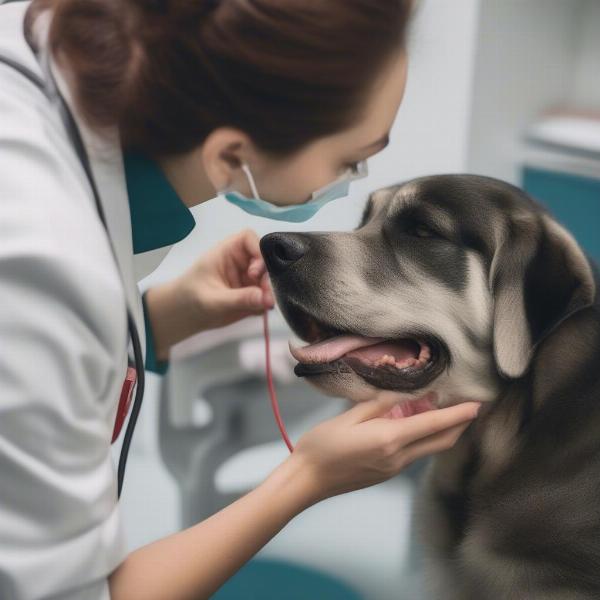Maintaining a healthy blood glucose level is crucial for a dog’s overall well-being. Understanding the normal glucose range for dogs and recognizing the signs of abnormal levels can help owners take proactive steps to ensure their furry companions stay healthy and happy. This article will delve into the specifics of canine glucose levels, explaining what’s considered normal, what factors can influence these levels, and when it’s time to seek veterinary attention.
What is a Normal Glucose Range for Dogs?
A normal blood glucose level for a dog typically falls between 75 and 120 milligrams per deciliter (mg/dL). While some fluctuation is normal, values consistently outside this range can indicate potential health issues. It’s important to remember that a single reading isn’t always definitive, and your veterinarian will consider other factors, such as clinical signs and additional tests, to reach a diagnosis.
Factors Affecting Glucose Levels in Dogs
Several factors can influence a dog’s blood glucose levels, including diet, exercise, stress, and underlying medical conditions. For example, a meal high in carbohydrates can cause a temporary spike in glucose, while strenuous exercise can lower it. Stressful situations can also lead to transient elevations in blood sugar.
How is Glucose Measured in Dogs?
Glucose levels in dogs are typically measured through a blood test, often performed at a veterinary clinic. While home glucose monitoring kits are available, it’s essential to discuss their use with your veterinarian to ensure accurate readings and proper interpretation of the results.
Signs of Abnormal Glucose Levels in Dogs
Recognizing the signs of abnormal glucose levels is essential for early intervention. Common symptoms of high blood sugar (hyperglycemia) include increased thirst, increased urination, weight loss, lethargy, and cataracts. Conversely, low blood sugar (hypoglycemia) can manifest as weakness, tremors, seizures, collapse, and even loss of consciousness.
When to Consult Your Veterinarian
If you notice any of these signs or have concerns about your dog’s glucose levels, it’s crucial to consult your veterinarian immediately. They can perform the necessary tests to determine the underlying cause and recommend appropriate treatment options. Early diagnosis and management are vital for preventing serious complications.
 Veterinarian Examining a Dog
Veterinarian Examining a Dog
Conclusion
Understanding the normal glucose range for dogs is a vital aspect of responsible pet ownership. By being aware of the factors that can influence glucose levels and recognizing the signs of abnormal values, owners can help ensure their canine companions live long, healthy lives. Regular veterinary check-ups and prompt attention to any concerning symptoms are crucial for early detection and management of any potential health issues related to glucose regulation. Remember, your veterinarian is your best resource for information and guidance on maintaining your dog’s optimal health.
FAQ
- What should I feed my dog if they have high blood sugar? Your veterinarian can recommend a specialized diet, often lower in carbohydrates and higher in fiber, to help manage your dog’s blood sugar levels.
- Can I test my dog’s glucose at home? Yes, home glucose monitoring kits are available, but it’s crucial to consult your veterinarian for proper usage and interpretation of results.
- Is diabetes common in dogs? Diabetes is a relatively common endocrine disorder in dogs.
- What are the long-term effects of uncontrolled diabetes in dogs? Uncontrolled diabetes can lead to various complications, including cataracts, kidney disease, and nerve damage.
- How often should I check my dog’s glucose if they have diabetes? The frequency of glucose monitoring will depend on your dog’s specific condition and your veterinarian’s recommendations.
- Can stress affect a dog’s glucose levels? Yes, stressful situations can cause a temporary increase in blood sugar.
- What are the treatment options for diabetes in dogs? Treatment typically involves insulin injections, dietary management, and regular monitoring.
About ILM Dog
ILM Dog (ILM Dog) is your trusted international resource for comprehensive dog care and nurturing advice. We offer expert guidance on a wide range of topics, from breed selection and health care to training, nutrition, grooming, and product recommendations. Whether you’re a new dog owner or a seasoned expert, our practical, reliable information will help you provide the best possible care for your furry friend. For personalized advice or inquiries, contact us at [email protected] or +44 20-3965-8624.